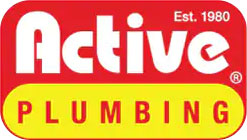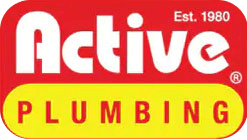Copper corrosion is not a new problem, it has been documented since about the late 1960’s, however, its cause is still mostly unknown and it occurs randomly.
We know that in a small number of cases that the high quality water in the city of Melbourne for example is affected by copper corrosion – a condition that mainly occurs within a customer’s own plumbing services.
What is copper pipe corrosion?
Copper pipe corrosion has four different forms, the most predominant form is called ‘blue water’. This is observed when copper leaches from the property’s internal copper plumbing in high enough concentrations to produce a blue or blue-green discoloration of the water WARNING (note that this indicates the copper levels in the water may exceed health guidelines and such water should not be consumed).
From time to time, a very small proportion of homes experience a ‘blue water’ problem caused by corrosion in their copper pipes. The other major form of corrosion is “pitting corrosion” which involves water leaking through small pin-sized holes in the pipe.
Copper pipe corrosion is a worldwide concern. In Australia, the CSIRO – among others – is undertaking extensive research into the issue. However the reasons for copper pipe corrosion are still unknown.
Is copper harmful?
Copper is an essential trace element which in small amounts is essential for human health, but, as with many otherwise valuable substances it can be harmful in excess.
The Australian Drinking Water Guidelines (ADWG) advise that a healthy needs about 2-3 milligrams of copper per day, most of which is gained from eating a healthy, balanced diet. Copper is not harmful to health, unless it is consumed in high quantities over a period of time. Those that are susceptible to increased copper levels are the frail, the elderly and infants. Consequently, the ADWG have established that the level of copper in drinking water should be less than two milligrams per litre to avoid any health risks associated with the long-term consumption of high concentrations of copper.
Note that blue or blue-green stains on bathroom fittings can occur when the copper concentration is at least 1 mg per litre.
A detectable bitter taste may suggest a copper concentration of 3 mg per litre or above (however, there are other conditions which can cause such a taste).
Caution:
If there are signs of copper corrosion in the home, then we recommend that customers contact us to investigate the issue further. Such water should not be used for feeding infants or filling aquariums (fish are very sensitive to copper in the water). Infants would need to consume large quantities of ‘blue water’ or have an under performing liver to be at risk, however it is wise to be cautious.
Copper is naturally removed from the human body by the liver, so anyone with a condition which impairs the function of the liver, such as cirrhosis or infants with Wilson’s Disease, should also avoid copper in water.
How can you detect copper pipe corrosion
There are five obvious signs that copper pipe corrosion may be occurring:
- Cloudy, blue or blue-green water coming from the cold tap – hence the nickname ‘blue water’.
- Blue or blue-green stains below the tap on sinks/basins or baths, or on other plumbing fixtures.
- An unpleasant bitter or metallic taste to the water.
- Individual or small clumps of blue crystals in the copper.
- Pipe failure or pinhole pipe leaks because of pitting corrosion.
One way to observe the copper level in your property’s water is to fill a clean white container (e.g. a bucket or ice cream container) with about two or three litres of water and then leave it to stand. If the water colour appears cloudy and/or has a blue or blue-green tinge then the copper level may be above the ADWG requirements.
What causes copper pipe corrosion?
At the moment on one really knows what causes copper pipe corrosion. The CSIRO, amongst others, is currently contributing to research into the issue to come up with some more definitive answers for the cause. The most agreed cause to-date is microbiological (bacteria) influenced corrosion. The biggest mystery is why it can affect one house (or only one section of pipe in one house) in a street and not the others, even though all the properties are of a similar age and using similar pipes and the same mains water.
Some popularly mentioned causes are the hardness and pH of the water, the age of the pipes, electrical earth currents and electrolysis. But there is evidence of ‘blue water’ in many parts of Australia and around the world – in many different quality waters, in hard and soft waters, in mains water and from rain-water tanks, and in many different pipe types both old and new.
Where is copper pipe used?
Copper pipes are used within the majority of buildings to transport water to the taps in the kitchen, bathroom, toilet, or laundry etc. Its popularity is largely due to its relative resistance to corrosion, as well as its strength, reliability and ease of use, compared to the previously used galvanised metal pipes. Most water mains are made of cast/ductile iron or steel, (all with internal cement lining) or plastic (PVC or polyethylene).
What can you do about copper pipe corrosion?
It present there is no guaranteed remedial treatment for copper pipe corrosion other than to replace the affected section of copper pipe with alternative material.
Some customers have reported being successful at reducing or eliminating the problem by regularly flushing water through the affected taps. For immediate relief, turn the affected tap on to give a high flow, for at least 30 seconds or until any blue/green water discolouration is no longer observed (typically, this is confirmed by using the white container exercise described previously).
If you have any doubts about the quality of your drinking water have your water tested, also the fitting of a suitable water filtration system would be advisable for your drinking water.
If you require any further assistance please call 1300651965
Links to other sites of interest:
Special purpose corrosive resitant pipes link smithfibercast http://www.smithfibercast.com/main.htm Our mission is to provide our customers with the most cost-effective solution for their corrosive fluid handling applications. We will supply the highest quality products, providing the best value for our customers.

